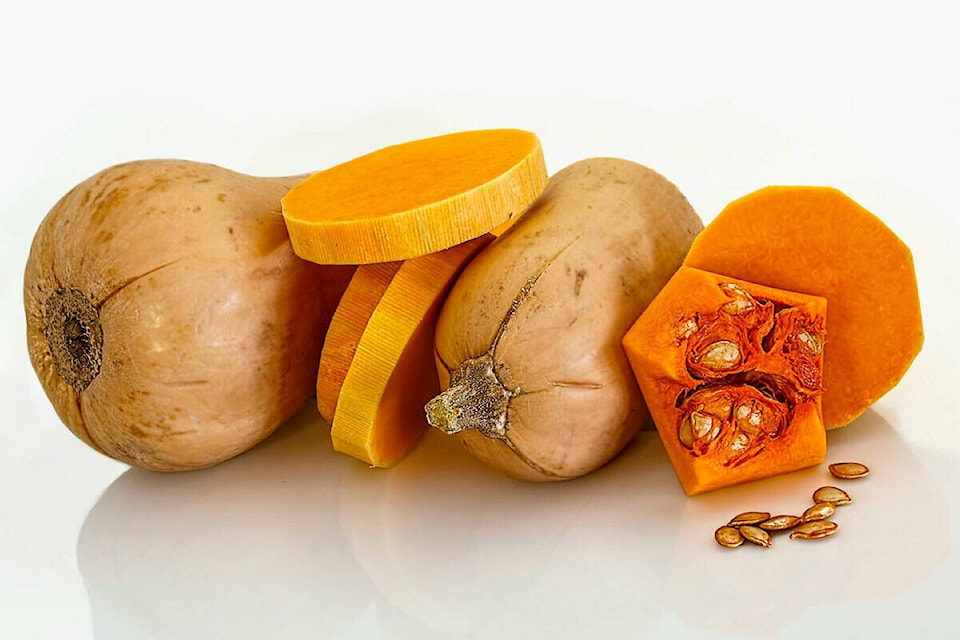By Chef Dez/Special to Black Press Media
While the name “winter” squash might hint at a frosty season, it’s actually autumn when these hearty vegetables shine their brightest. Beyond the classic pumpkin, a treasure trove of delectable options awaits your culinary exploration.
Winter squashes are renowned for their ability to stay fresh for extended periods, thanks to their tough, inedible skin. To keep them at their best, store them in a cool, dark place with good ventilation.
Among the stars of the market right now are acorn, butternut, spaghetti, and of course, the iconic pumpkin.
Acorn squash: Resembling oversized acorns, these squashes transition from dark green to vibrant orange as they mature, acquiring a sweeter taste. Their deep ridges might challenge standard peelers, so opt to prepare them in halves or rings, later discarding the skin. Once cooked, the flesh turns into a fine-textured, yellowish-orange delight.
Butternut squash: This variety is unmistakable for its pear-like shape, complete with a long neck and smooth skin. Ripe butternuts boast a tan hue, while hints of green signal they’re not quite there yet. With seeds concentrated in the bottom half, butternut squashes offer an abundance of flesh. Its rich, sweet, orange interior has won the hearts of many.
Spaghetti squash: This one stands out for its pasta-like strands of translucent yellow flesh. While it may have a relatively mild flavour, its unique texture and versatility more than compensate. A favorite among kids and low-carb enthusiasts, it can mimic pasta when topped with tomato sauce. Look for its smooth yellow skin and elongated oval shape in the market.
Pumpkin: Beyond their role as Halloween jack-o’-lanterns, pumpkins hold a distinguished place in various pie and cake recipes. They are the largest of the winter squashes, offering both bold flavour and thick flesh. While all squash seeds can be roasted for a crunchy snack, pumpkin seeds steal the spotlight. Due to their higher fat content, moderation is key – a serving roughly equates to the size of a golf ball.
These winter squashes are versatile ingredients, ready to star in soups, salads, desserts, stir-fries, pastas, and vegetable dishes. Each variety brings its own nutritional benefits, with the orange-fleshed varieties notably high in beta-carotene, a powerful antioxidant. Embrace the season’s bounty and let these squashes inspire your culinary creativity!
Dear Chef Dez:
We always buy cans of pureed pumpkin this time of year for different dessert recipes. Since pumpkins are available fresh, wouldn’t it be more economical to make it myself? How do I go about doing this?
John G., Chilliwack
Dear John:
It can be done quite easily. Cut a fresh pumpkin in half and remove the seeds and the stringy filaments. Place the cut sides down on a baking sheet and bake in a 350° F degree oven until the flesh is very tender – approximately one hour. Spoon the cooked flesh off the skin and into a food processor, and puree until smooth. Transfer it to a large wire mesh strainer set over a bowl, cover, and let drain in the refrigerator overnight. Discard the liquid and use the drained puree in any fashion that you would with canned.
.
.
– Chef Dez is a food columnist and culinary instructor in the Fraser Valley. Visit him at www.chefdez.com. Send questions to dez@chefdez.com or to P.O. Box 2674, Abbotsford, B.C. V2T 6R4
.
